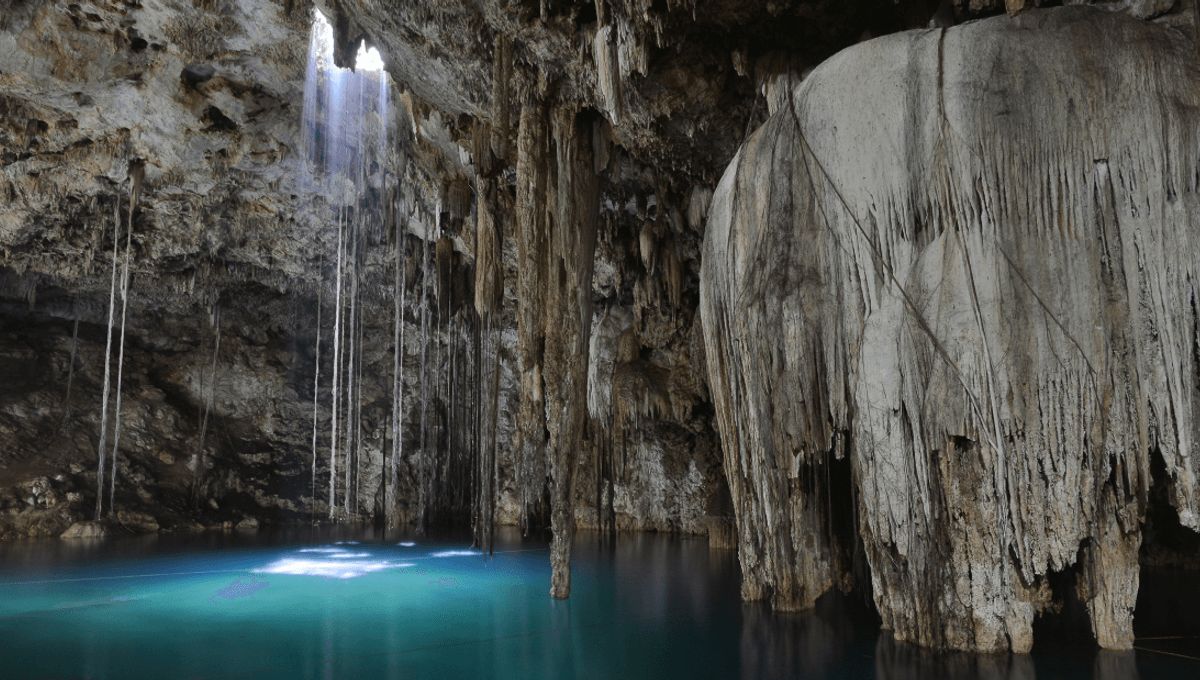
This article first appeared in Issue 4 of our free digital magazine CURIOUS.
The Yucatán Peninsula in Mexico is unusually flat topside, but beneath its surface sit vast networks of underwater tunnels and sinkholes known as cenotes. They formed through speleogenesis (doesn’t science have fun words?) as rainwater mixed with carbon dioxide in the air and seeped into cracks in the limestone where the resulting weak acid slowly ate away at deposits of calcium carbonate, also known as calcite.
When this same acid mixed with salt water deep in the limestone, its corrosive power was increased and this is where the greatest dissolution is seen, creating cavernous spaces with small openings to the outside world. Bacteria also play a part in carving out the cave systems as they decompose organic matter to create hydrogen sulfide, which – when mixed with small amounts of dissolved oxygen – can create sulfuric acid.
Despite these seemingly harsh conditions, cenotes contain a surprising diversity of fish and zooplankton, several of which can only be found in the Yucatán and are endangered by development, pollution, and agricultural runoff.
Beyond the spectacular caves and curious wildlife, the cenotes are also home to icicle-shaped deposits called stalactites and stalagmites which form as water dissolves over limestone. Stalactites hang from the ceiling and drip as they actively form, and it’s these drops that eventually lead to the development of a mound-shaped stalagmite on the floor. Over time, stalactites and stalagmites can meet in the middle, forming colonnades that join in the middle.
While the cenotes of the Yucatán Peninsula are a popular tourist spot, they are considered sacred in Maya tradition. Researchers diving in cenotes have discovered many ancient archaeological artifacts indicating their significance, and have even uncovered megalodon teeth and a 9,000-year-old human skeleton. The Guardians Of The Cenotes are currently working to get these sacred sites protected to reduce their pollution, but visitors can help by leaving no trace and not entering a cenote without permission.
Cenotes can be found across the Yucatán Peninsula. While communities benefit from tourism, it’s important to remember to be respectful and responsible should you visit in order to reduce your impact on these sacred bodies of water and the endangered species they contain.
CURIOUS is a digital magazine from IFLScience. Each month it features interviews, experts, deep dives, fun facts, news, book excerpts, and much more. Issue 7 is OUT NOW, or subscribe to get it delivered to your inbox.
Source Link: A Hidden Network Of Sacred Cenotes Sits Beneath Yucatán Peninsula